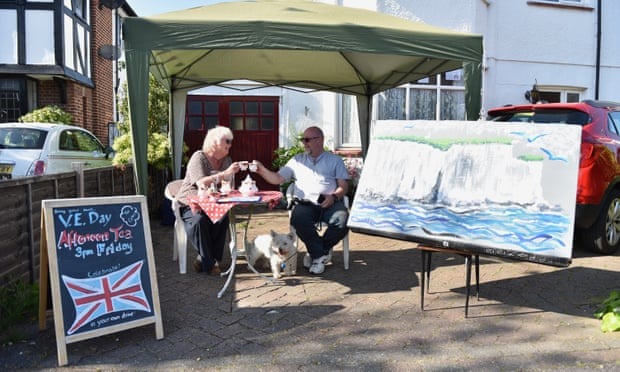The coronavirus pandemic has exposed a generational divide in living conditions across Britain, with young people more likely to be locked down in smaller, overcrowded homes with no access to garden than older age groups, a report has found.
The scale of inequalities in living conditions are, the report concludes, “both striking and worrying as we enter a reopening phase that will see many people continue to work from home, alongside the risks of further local or national lockdowns”.
Lockdown Living, funded by the Nuffield Foundation, found that young people aged 16-24 in England were locked down in homes with, on average, half the floor space of older people, and are more than one-and-a-half times as likely to have no garden, or to live in a derelict or congested neighbourhood.
The report also found that ethnicity plays a major role in determining the quality of household living conditions. Nearly 40% of under-16s from black and minority ethnic households have no obvious garden, compared with 17% of white children. Close to a quarter live in a poor-quality environment.
Millions of children and young adults have found themselves spending far more of their time in overcrowded homes with no garden access,” said Fahmida Rahman, research and policy analyst at the Resolution Foundation.
Alex Beer, the welfare programme head at the Nuffield Foundation, said: “This report provides further evidence that Covid-19 is exacerbating many existing inequalities, with younger people and people from minority ethnic groups disproportionately affected.”
Sir John Hills, Richard Titmuss professor of Social Policy at the London School of Economics, said: “We are seeing a growing inequality in the way we use our housing space.”
But James Prestwick, the director of policy and external affairs at the Chartered Institute of Housing, said he was “concerned to make sure this report is not used to pit one generation against another”.
“The highlight is the failure of the property market,” he said. “I would expect people from younger groups to be living in smaller homes than retirees. It’s important to tie this to the lack of social housing and the need to build more.”
Peter Matejic, the head of evidence at the Joseph Rowntree Foundation, said: “Younger people tend to start at the bottom of the property ladder and spending on housing is, to a certain extent, discretionary, so in some ways it is not surprising that younger people tend to have less space.
“Some younger people prioritise things other than floor space: they might want to live with friends or in city centres, where properties are smaller and have no outside space.”
Dr Jennie Bristow, author of The Sociology of Generations and Baby Boomers and Generational Conflict, said: “The divide is actually one of class and ethnicity, not one of generation. We need to question government policies that have shut down public spaces for young people during lockdown and pushed them back into their homes during lockdown when evidence doesn’t show the necessity of that.”
Caroline Abrahams, the charity director at Age UK, said: “Poor housing is a problem affecting people of all ages. Two million older households, including 530,000 long-term sick and disabled older individuals, live in homes classed as ‘non-decent’.”
Source: The Guardian





